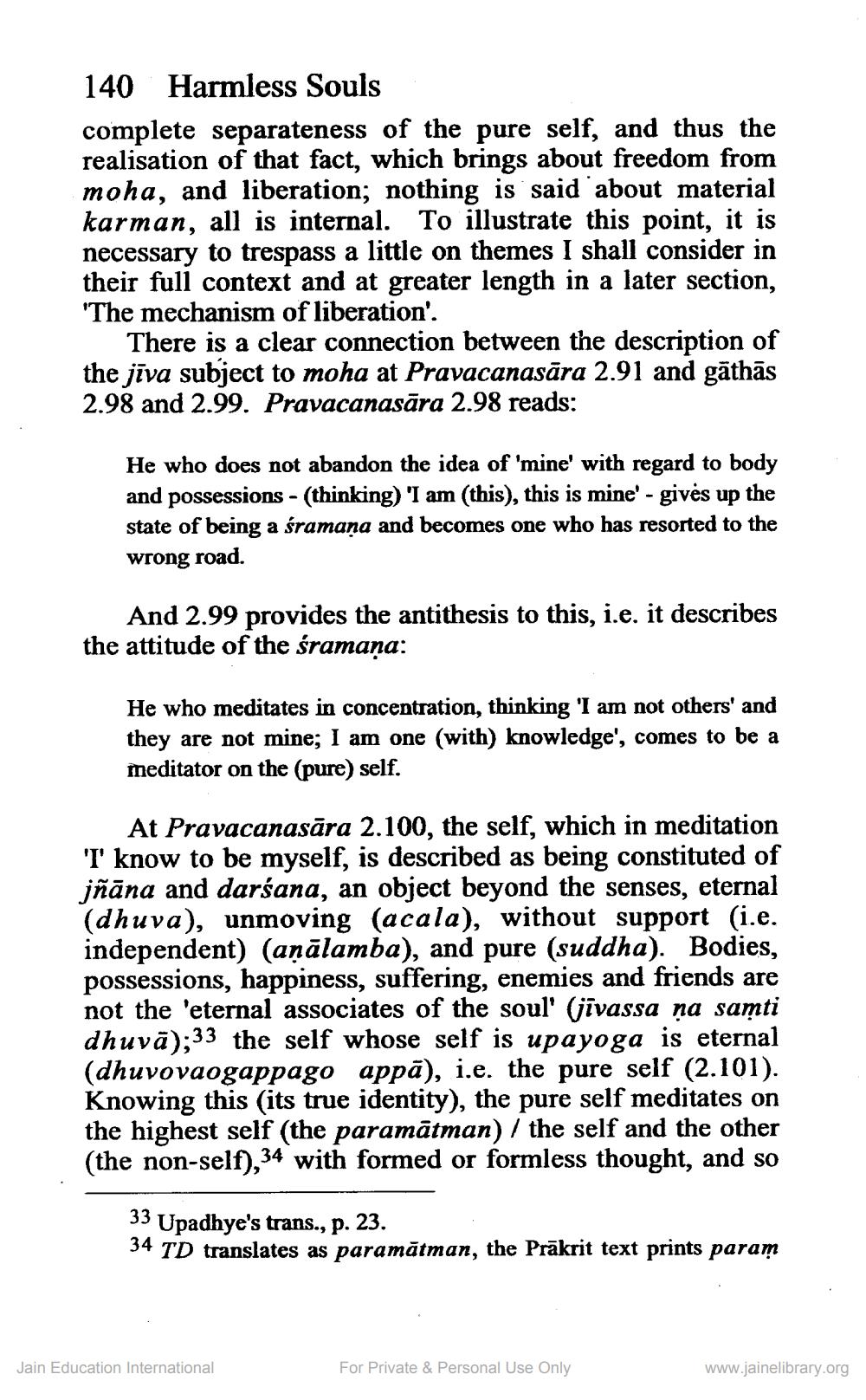________________
140 Harmless Souls
complete separateness of the pure self, and thus the realisation of that fact, which brings about freedom from moha, and liberation; nothing is said about material karman, all is internal. To illustrate this point, it is necessary to trespass a little on themes I shall consider in their full context and at greater length in a later section, 'The mechanism of liberation'.
There is a clear connection between the description of the jiva subject to moha at Pravacanasāra 2.91 and gāthās 2.98 and 2.99. Pravacanasāra 2.98 reads:
He who does not abandon the idea of 'mine' with regard to body and possessions - (thinking) 'I am (this), this is mine' - gives up the state of being a śramana and becomes one who has resorted to the wrong road.
And 2.99 provides the antithesis to this, i.e. it describes the attitude of the śramana:
He who meditates in concentration, thinking 'I am not others' and they are not mine; I am one (with) knowledge', comes to be a meditator on the (pure) self.
At Pravacanasāra 2.100, the self, which in meditation 'I' know to be myself, is described as being constituted of jñāna and darśana, an object beyond the senses, eternal (dhuva), unmoving (acala), without support (i.e. independent) (aṇālamba), and pure (suddha). Bodies, possessions, happiness, suffering, enemies and friends are not the 'eternal associates of the soul' (jīvassa ṇa samti dhuva);3 ;33 the self whose self is upayoga is eternal (dhuvovaogappago appa), i.e. the pure self (2.101). Knowing this (its true identity), the pure self meditates on the highest self (the paramātman) / the self and the other (the non-self),3 ,34 with formed or formless thought, and so
33 Upadhye's trans., p. 23.
34 TD translates as paramātman, the Prakrit text prints param
Jain Education International
For Private & Personal Use Only
www.jainelibrary.org




